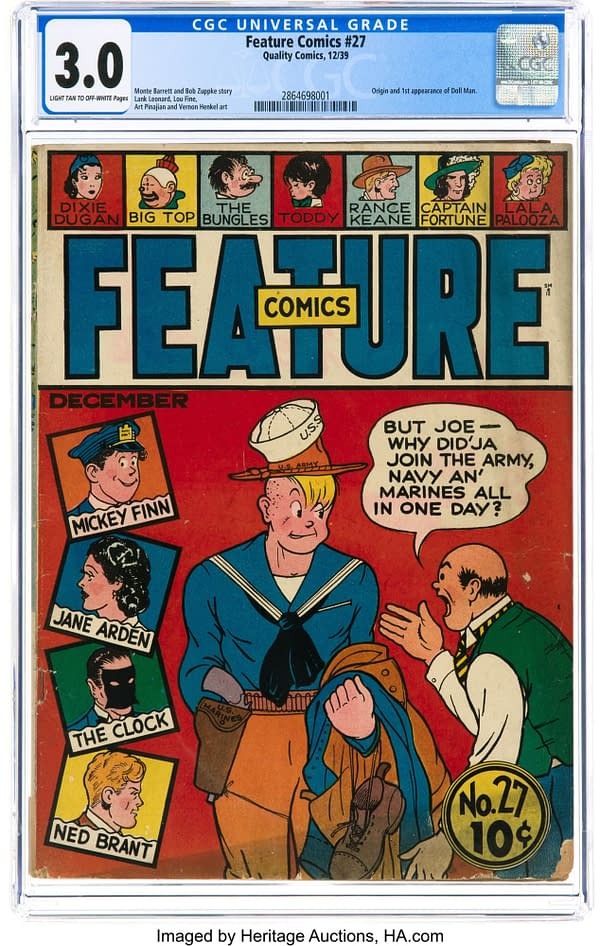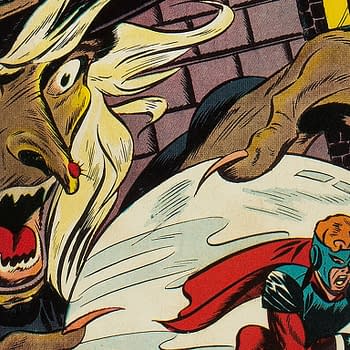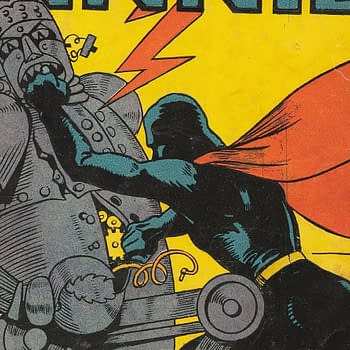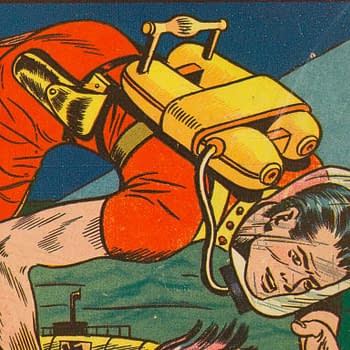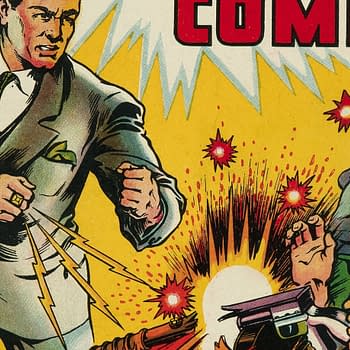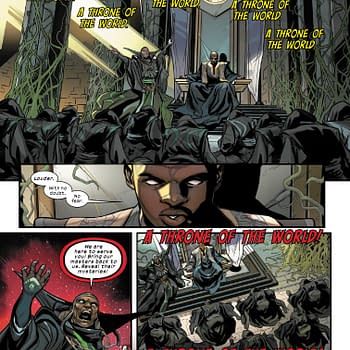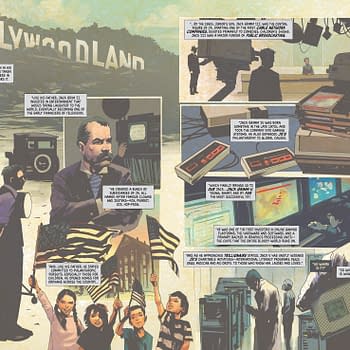Posted in: Comics, Heritage Sponsored, Vintage Paper | Tagged: doll man, quality comics, will eisner
Doll Man's Debut by Will Eisner in Feature Comics #27, at Auction
Debuting in Quality Comics' Feature Comics #27 by Will Eisner, Doll Man is considered the Golden Age's first shrinking superhero.
Article Summary
- Doll Man debuted as Golden Age's first shrinking hero in Feature Comics #27 by Will Eisner.
- The character's origin features scientist Darrel Dane's harrowing transformation.
- From a third-stringer to cover feature, Doll Man's popularity surged in subsequent issues.
- Doll Man's legacy continued post-Quality Comics, eventually being revived by DC Comics.
Considered the first shrinking superhero in comics and Quality Comics' first super-powered character, Doll Man debuted in a four-page origin story by Will Eisner in Feature Comics #27. Like many publishers in 1939, Quality Comics publisher Busy Arnold was testing the waters of the emerging trend, and this issue was near ground zero of the superhero boom that year, which would come to define the Golden Age, with Feature Comics #27 on the newsstands at the same time as the likes of Marvel Mystery Comics #2, Detective Comics #33 and Fox's Fantastic Comics #1. But Arnold quickly figured out he had a hit concept on his hands. The diminutive character would stand the test of time, and it all started in Feature Comics #27 (Quality, 1939). There's a CGC GD 2.0 copy up for auction in the 2025 July 18 Golden Age Comics Century Showcase Auction at Heritage Auctions.
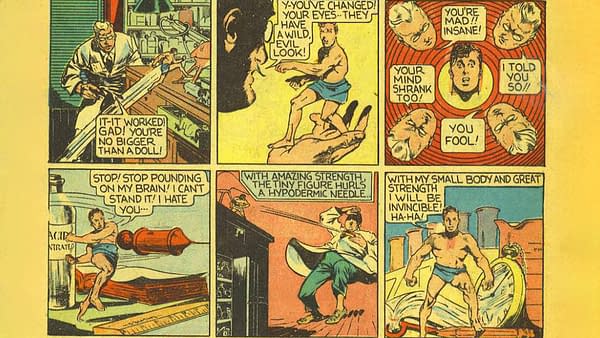
The four-page Doll Man saga of Feature Comics #27, crafted by Eisner, throws readers straight into the action as scientist Darrel Dane perfects a shrinking serum with the help of Professor Roberts. But things take a dark turn as Dane tests the serum on himself, shrinking to the size of a doll and experiencing a bout of madness in the process. Doll Man demonstrates his incredible strength and agility, effortlessly handling objects many times his size. Overwhelmed by the process, Dane even attacks Professor Roberts in a moment of confusion before the professor's daughter arrives to find her father in distress.
Recovering himself, Professor Roberts confronts Dane, telling him he must decide whether to be good or evil. Dane responds by vowing to devote himself to a crusade against crime and evil. The final page sees Doll Man putting his powers to the test, as he rescues his fiance (and Professor Roberts' daughter) Martha from a gangster named Falco. In the end, Dane proclaims that he shall be known as the Doll Man. Overall, it's a classic style of superhero origin told in a very compact way by Eisner.
Doll Man's Feature Comics #27 debut had him as essentially the third-stringer of that issue, behind Sunday page reprints Mickey Finn and Nippie, and with no sign of him on the cover, which featured Joe Palooka drawn by Ed Cronin. Feature Comics #28 gave him a small cover portrait inset but utterly buried him in the middle of the issue. Feature Comics #29 then moved him to the front of the comic book, the coveted first feature of the issue. Doll Man hit the big time with Feature Comics #30 with his first full cover and continuing as the lead feature of the title, while the feature expanded from four to nine pages by Feature Comics #32. As for Feature Comics #27 itself, beyond a number of newspaper strip reprints, the issue included Reynolds of the Mounted by Art Pinajian, The Clock by George Brenner, Captain Fortune by Vern Henkel, Lala Palooza by John Devlin, Rance Keane by Bill Smith, and Off the Record by Ed Reed.
Doll Man remained a popular cover feature in Feature Comics as well as remaining the lead feature of the title through issue #139. He would also get his own Doll Man title 1941-1953 and be acquired by DC Comics along with other Quality Comics characters when Quality went out of business in 1956. Doll Man would finally resurface at DC comics with other Quality characters in Justice League of America #107 (October 1973). A memorable early superhero who stood the test of time, there's a CGC GD 2.0 copy of Feature Comics #27 up for auction in the 2025 July 18 Golden Age Comics Century Showcase Auction at Heritage Auctions.
